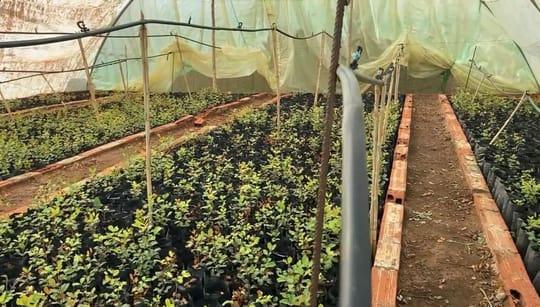I recently had the pleasure of attending a Forestry Roundtable discussing the importance of forests and how to best communicate their value to a wide range of people and communities. Presented by Beyond Trees Network and The US Forest Service International Programs, our roundtable consisted of: Hon. Marta Corella, mayor of Orea (Spain); Sara Fernández, forester, writer, and illustrator; Sonia Roig, professor at the Forestry School in the Technical University of Madrid; Ana Macías, urban forester; and Pilar Valbuena, forest community strategist.
Throughout our program, we heard how there is a need for better communication on behalf of forests to spread the knowledge of their necessity and benefits across many different groups of people. We heard from Mayor Corella, a spokesperson for rural communities whose livelihood is linked with the landscape, regarding the positive impact forests have on local communities.
She extrapolated to how even though these communities see these impacts firsthand, everyone is reaping the benefits. She spoke of the symbiotic relationship rural groups have with forests, and how this ecosystem not only helps these groups but also the world. Forests have a wide range of benefits, including carbon sequestration, filtering water, regulating hydraulic flow, as well as generating wild foods and sustainable products.
The problem we continued to hear during the roundtable is that there isn’t enough value placed on our forests. Forests present a difficult conundrum, where we see that many people derive so much enjoyment and use from them. However, it’s hard to accurately quantify their value. While forests that are within specific countries’ borders aren’t public goods, they provide a public good for everyone in the world through carbon sequestration as well as our total Earth ecosystem.
These forests provide benefits for so many people that aren’t always immediately near them, so it is even more important to communicate accurately and effectively on their behalf. This includes creating better products to inform both children and adults of their necessity and far reaching usefulness. We need these areas to help regulate our Earth, so informing the public that they are much more valuable if preserved instead of timbered can help us have a beautiful and sustainable planet for years to come.
We need a global effort for recognition of forests and what they mean to us as a species. Instead of cutting down more and more, we should prioritize planting and helping restore them. If our forests help us so much in the world and provide us with so many far-reaching benefits, why do we run into this problem of deforestation? It is easier to understand the monetary value of timbering than it is to understand what healthy forests from clean air and water mean to everyone in the world.
Thus, one person supposedly derives more value from cutting down the forest even though we know our society places more value on keeping them healthy. This is where communication and forestry telling can help us realize more of their intrinsic value and necessity. Hearing stories from community members close to the forests and using these stories to become closer to nature is something that can help us change our current actions.
On September 22nd, I attended another program on behalf of HAF regarding the need for forest renewal. This was titled, "Cities4Forests: A City Led Call to Action," and focused on what policymakers and city leaders should be doing to help support tree planting in the city limits in addition to protection of the surrounding woodland. I think this is an extremely important step in developing more of a unified approach to supporting forests.
Our cities are where most of our population lives, and they are often the most removed from nature. Pairing forestry storytelling and better communication with actual action in cities to plant more trees will help lessen the divide between nature and our urban areas.
Too often, we remove ourselves from Earth’s ecosystem and think of ourselves as existing in two different spheres: that of the human side and then all other plants and animals. Fostering more of a connection between humans and the Earth around us will not only help our planet but will also help our well-being.
Viewing and being around nature reduces stress and anger while increasing pleasant feelings, so planting city forests may have far-reaching benefits currently unknown. Educating and spreading knowledge about the benefits of forests to all our children as well as unaware adults will create a society of conscientious and informed people better able to make decisions for the good of the Earth and all those living in it.
